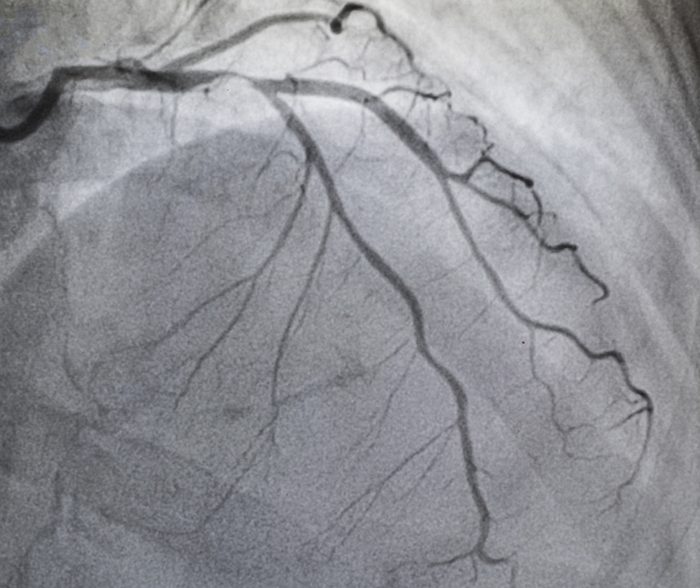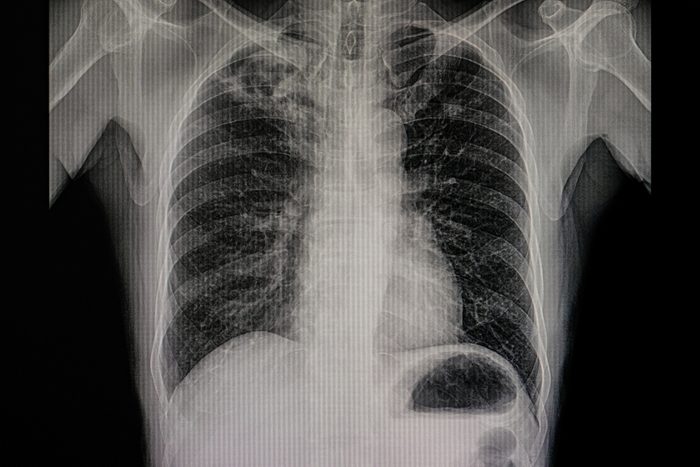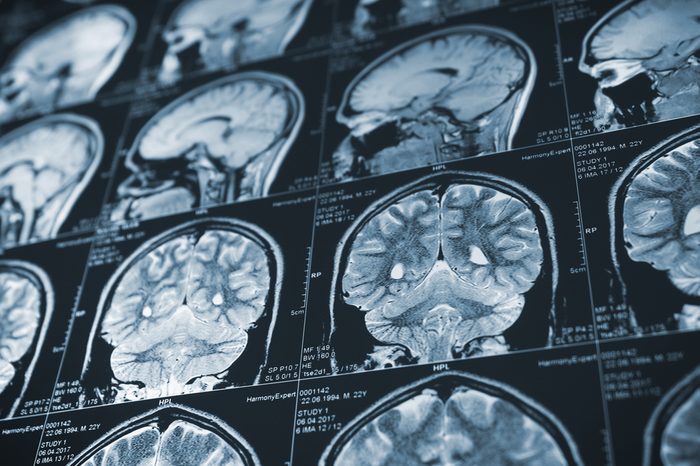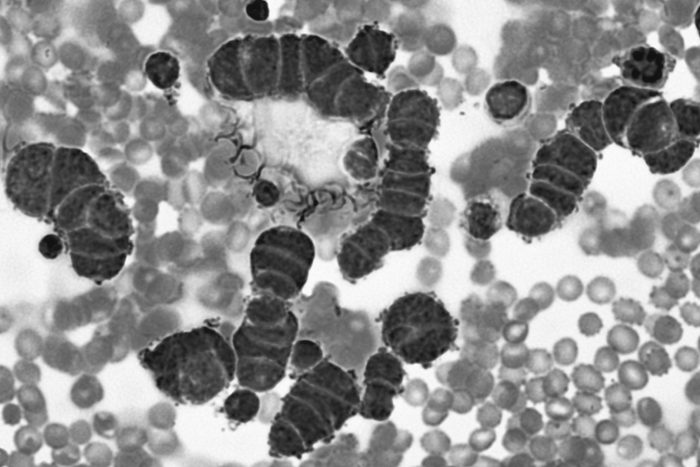
Coronary artery disease
Ischemic heart disease, also called coronary artery or heart disease, is the leading cause of death worldwide, according to the World Health Organization (WHO). Ischemic heart disease and stroke accounted for a total of 15.2 million deaths in 2016. This statistic doesn’t surprise Nikki Stamp, MBBS, FRACS, a cardiothoracic surgeon in Australia, who says that when an organ as vital as the heart is at risk, so, too, are lives. She also points out that heart disease has lots of preventable or manageable risk factors. “Some studies show that 90 percent of people have at least one risk factor for heart disease,” Dr. Stamp says. “It’s vital to remember that heart disease is the leading cause of death for both men and women.” The best things people can do to lower their risk are exercise, eat well, and avoid smoking, according to Dr. Stamp. Read about 15 diseases you thought were gone but aren’t.

Stroke
An interruption of blood supply causes a stroke. This could happen because of a clot or a bleed in the brain, according to Kiah Connolly, MD, a board-certified emergency medicine physician at Kaiser Permanente and the health director at Trifecta. Strokes resulting in immediate death often occur in the brain stem and affect the ability to breathe. “If these areas . . . are in charge of us breathing, doing things we need to do on a daily basis to survive, this obviously causes us to immediately die,” she says. Even if a person survives a stroke, he or she is at a higher risk for conditions like hypertension and infections. Those who have had a stroke are also likely to have some paralysis, speech problems, or other deficits that make managing their well-being more challenging. “Without that mobility, or the ability to better take care of ourselves, that can lead to kind of a decomposition overall, and it puts us at risk for morbidity,” Dr. Connolly says. Here’s more on how many people die from heart disease each year.

COPD
The third leading cause of deaths worldwide is COPD, or chronic obstructive pulmonary disease—an umbrella term for progressive lung diseases such as emphysema, chronic bronchitis, and refractory (nonreversible) asthma, according to the COPD Foundation. The common symptoms of COPD include shortness of breath, wheezing, and frequent coughing. Check out 6 diseases your hands might reveal.

Lower respiratory infections
According to Amesh Adalja, MD, a board-certified infectious-disease physician, lower respiratory infections, fourth on WHO’s list, include a range of conditions. That said, the term is usually a reference to pneumonia in this context, Dr. Adalja says. “Pneumonia is caused by many different microorganisms and bacterial and viral species,” he says. Some doctors have called it “the old man’s friend” because it was considered a relatively fast way to die. “The elderly have much less reserve and other co-morbid conditions that make their pneumonia more likely to end in death,” Dr. Adalja adds. Lower respiratory infections remain the most deadly communicable diseases, causing three million deaths worldwide in 2016, according to WHO. Learn about 12 diseases you didn’t know you could get on vacation.

Alzheimer’s disease and other dementias
Although this progressive disease isn’t always a direct cause of death, Alzheimer’s does contribute to other factors that shorten people’s lives or cause deadly complications, and the disease is fifth on WHO’s list. As Alzheimer’s progresses, patients have difficulty controlling motor skills such as swallowing and walking, according to the Alzheimer’s Association. Swallowing issues in particular put people with Alzheimer’s disease at a higher risk for conditions like aspiration pneumonia and other respiratory infections, according to Healthline.

Respiratory cancers
Cancers of the trachea, bronchus, and lungs caused 1.7 million deaths in 2016, according to WHO, and are sixth on the organization’s list. According to the Mayo Clinic, lung cancer specifically is the leading cause of cancer deaths in the United States—among both men and women. Although it is closely associated with smokers, even nonsmokers are at risk for developing lung cancer, according to the Cleveland Clinic. Most respiratory cancers have the same symptoms, including coughing, wheezing, and shortness of breath. Find out the 15 serious diseases that strike women more than men.

Diabetes
Diabetes-related deaths were the seventh most common worldwide in 2016. One potentially fatal complication of diabetes is a condition called diabetic ketoacidosis, Dr. Connolly points out. In it, the body produces excessive levels of certain blood acids, and the body becomes so overwhelmed with sugar that it starts compensating in other ways. “When the body is . . . too acidotic and too dehydrated, and by causing brain swelling, diabetes can cause death in and of itself,” Dr. Connolly says. Although this mostly occurs in type 1 diabetics, Dr. Connolly says it can also happen in extreme cases of type 2 diabetes. People with diabetes are also at risk for a number of other complications, infections, and diseases, including stroke and heart attacks, Dr. Connolly adds.

Diarrheal diseases
According to the CDC, diarrhea causes death by severely dehydrating the body. Rotavirus, the most common cause of diarrheal disease among children, causes 40 percent of hospitalizations for diarrhea in children under the age of 5. Although there is a vaccine for this disease, the CDC reports that rotavirus is a major cause of death in developing countries.

Tuberculosis
This bacterial disease typically infects the lungs, but it can also affect other areas of the body, including the brain, skin, and abdomen, Dr. Adalja says. Although pneumonia is more common in the United States and Canada, tuberculosis is more common in low-income countries, Dr. Adalja says. It is particularly hard to treat, especially in these resource-poor countries, which likely contributes to its ranking as one of the world’s deadliest diseases. According to Dr. Adalja, the regimens necessary to treat this easily transmissible disease can be challenging to develop and follow. In addition, the vaccine, which isn’t widely used in the United States, doesn’t always protect against TB. Next, check out 10 diseases that could be cured in your lifetime.
